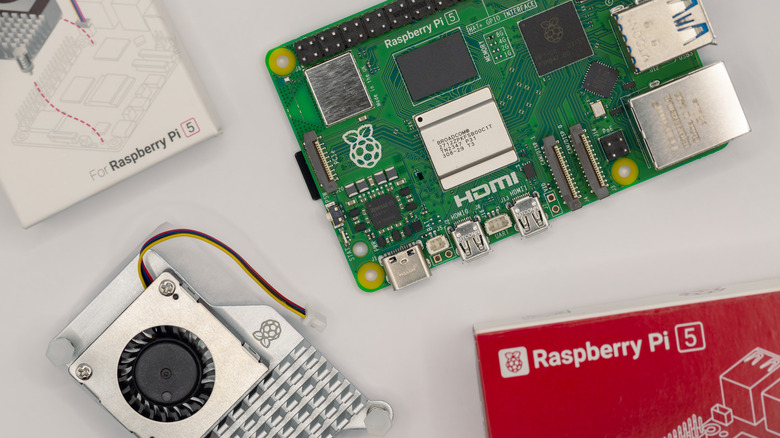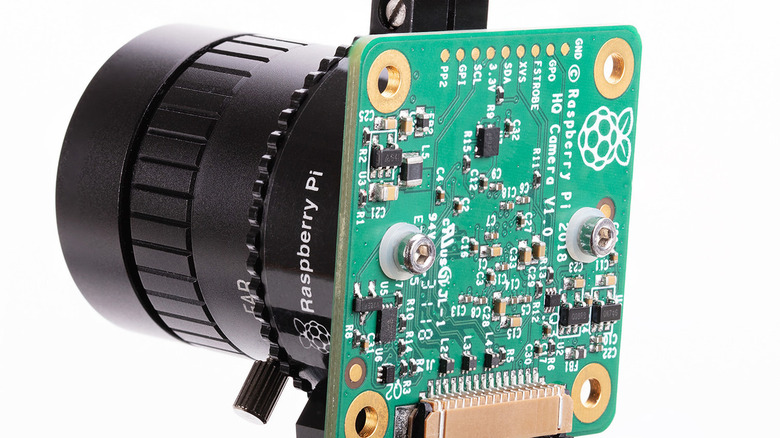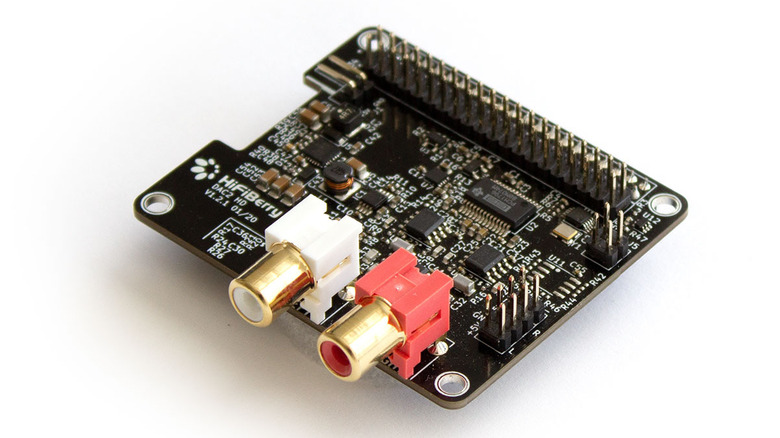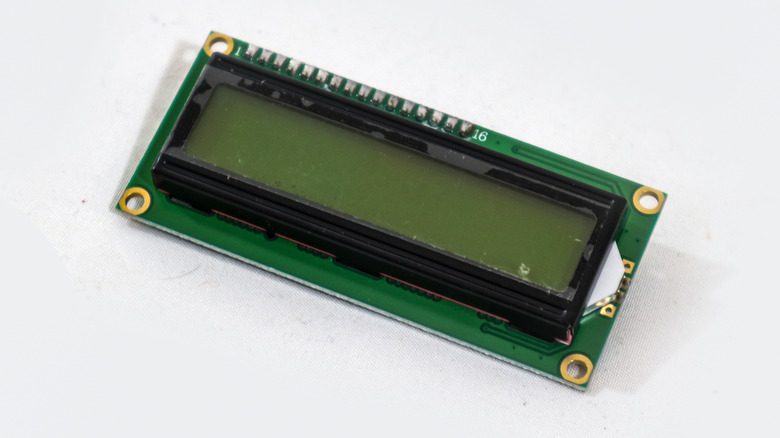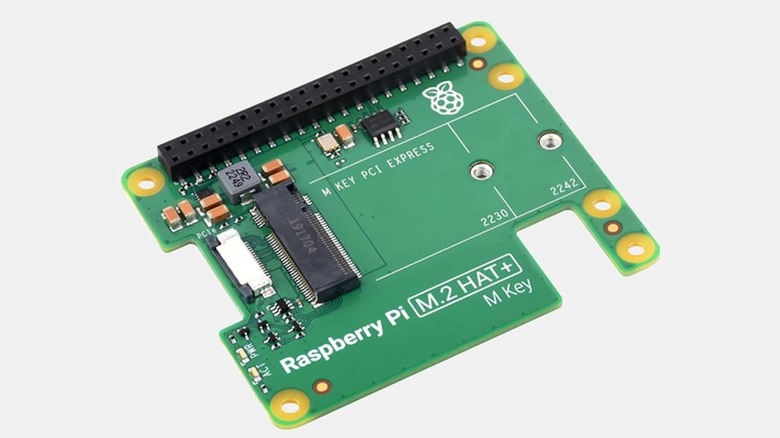5 Raspberry Pi Accessories To Supercharge Your Next Project
We may receive a commission on purchases made from links.
The Raspberry Pi single-board computer offers myriad ways to learn, explore, and create. It can be as simple as a small, portable computer or as complicated as an arcade cabinet. Whether you want to build a Telegram texting machine, a motion-activated camera, a network-wide ad blocker, or the perfect handheld emulator, the humble Raspberry Pi does it all, and you can do even more with a few accessories.
Accessories are crucial to the Raspberry Pi experience. While there are many projects that don't require a single accessory, the best projects often require at least one. Some accessories, like a piezo speaker, are small and inexpensive, and others, like a camera or display, offer more possibilities but cost more money.
Although a bigger budget opens the door to more complex projects, there are great Raspberry Pi accessories for every budget. If you want to supercharge your Raspberry Pi projects, these are the top 5 Raspberry Pi accessories we recommend.
Raspberry Pi HQ Camera Module
Though there are other camera modules for the Raspberry Pi, this HQ camera module takes it a step further. It's an interchangeable lens camera module with a 12.3-megapixel CMOS sensor, allowing you to customize your look and create high-resolution images. It can also capture video at 1080p.
So, what can you do with this camera module? The answer is a lot. With the HQ camera module, you can make a webcam for Zoom meetings and talking head recording. You can also make the camera turn photos into AI-generated images.
Using the Raspberry Pi HQ camera as a motion-activated security camera is one of the most popular uses. The camera can be set up to send you email alerts, which is great for keeping an eye on your home when you're out of town. The motion-activated camera is also great for indoors, allowing you to monitor your pets while you're at work. In addition to sending alerts, you can also access the camera feed at any point if you're on the same network, an ideal situation for avid birdwatchers.
HiFiBerry DAC2 HD
Want to upgrade your sound system without spending a fortune? Despite what hi-fi audio snobs will tell you, it is possible with something like the HiFiBerry DAC2 HD. This Digital-to-Analog Converter (DAC) module, which converts a digital signal to analog sound, connects to the Raspberry Pi via the general-purpose input/output (GPIO) pins on the device and transforms your mini computer into a portable sound hub that lets you listen to all your music.
The HiFiBerry DAC2 HD is not a plug-and-play device. You'll need to install software, but it's nothing too hard. The hardest part is choosing the right software. Available software includes HiFiBerryOS, LibreELEC, Roon, and Volumio. Each software has its advantages and disadvantages. HiFiBerryOS is simple and lets you stream Spotify. Volumio is complex and more customizable, allowing you to stream your favorite music and podcast services. Finally, Roon is made for streaming your music library, which is kept on a server on your network and requires a subscription.
No matter which option you go with, you'll be able to experience your music in a new light. Combined with a stereo and some nice speakers, you'll have a high-end system on a budget.
SunFounder I2C Display Module
The SunFounder I2C display is an inexpensive and easy-to-install component. There are many Raspberry Pi projects that, while they don't require a display, would greatly benefit from one. The reason is that a simple I2C LCD display can elevate a project with a few lines of text. A project such as a music streaming device can work without a screen, but adding a screen makes the project more practical. It lets you see everything from the song title and the artist to what's coming next in the queue.
In some cases, the display is much needed, like if you're creating a weather station that tracks temperature, humidity, and air pressure. In that case, this tiny display can relay all the basic information you need, and it's small enough that it doesn't require a separate power source. So, while it may look simple and can't do much more than display text, the SunFounder I2C display is quietly an elite accessory.
Raspberry Pi Sense HAT
The Sense HAT is an official Raspberry Pi accessory that is now iconic. It was initially developed for use on the International Space Station — it was co-developed with the European Space Agency — and it has since been a must-have accessory because it's both packed with features and fun to use. The LEDs make the device stand out and lend themselves to quirky projects.
Onboard the Sense HAT are the following sensors: gyroscope, accelerometer, magnetometer, temperature, barometric pressure, humidity, and color and brightness. Essentially, this HAT can record everything in your immediate environment, and the accelerometer and gyroscope can be used for tracking speed and orientation.
There are projects galore for the Sense HAT, but creating a weather station is at the top of the list. You can track the temperature, humidity, and pressure of your surroundings, and you can keep track of it using the LEDs on the HAT. It's not an efficient way to receive information, but the big, colorful LEDs make it fun.
Raspberry Pi M.2 HAT+
The M.2 HAT+, which is another official Raspberry Pi accessory, solves the many issues that come along with using a microSD card. This HAT allows for the use of M.2 NMVe SSDs with your Raspberry Pi. This is currently the fastest type of storage available. The M.2 HAT+ supports 2230 and 2242-size NVMe drives, which can typically be found with a capacity of 1 or 2 terabytes. There's also a Raspberry Pi SSD kit, which comes bundled with the HAT and either a 256 GB or 512 GB NVMe drive.
In addition to expanding storage, NVMe SSDs are much less prone to failure compared to a microSD card, and the transfer speeds make moving and accessing files quicker. With an M.2 HAT+, you can make the most of storage-dependent projects, like media servers and video game consoles. Or, if you use your Raspberry Pi as a desktop PC, the additional fast storage will ensure you can store as many applications and files as you want.
